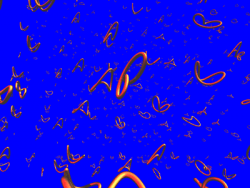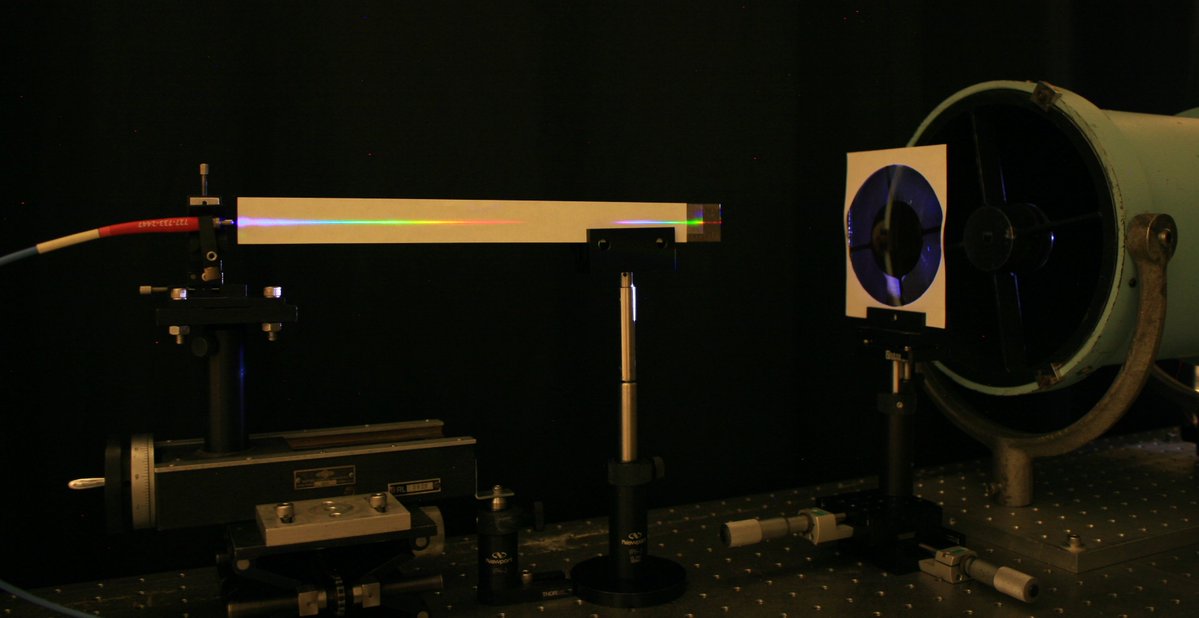Holograms are useful for more than interesting-looking baubles in gift shops. Materials scientists have used them for applications from stress/strain gauges to data storage systems. It turns out they would also be useful in making extraordinarily lightweight, flexible mirrors for space telescopes. A new study led by researchers at the Rensselear Polytechnic Institue shows how that might happen.
Continue reading “Lightweight, Flexible Lens Could be the Future of Space Telescopes”Why Our Universe is Not a Hologram

Editor’s note: This article was originally published by Brian Koberlein on G+, and it is republished here with the author’s permission.
There’s a web post from the Nature website going around entitled “Simulations back up theory that Universe is a hologram.” It’s an interesting concept, but suffice it to say, the universe is not a hologram, certainly not in the way people think of holograms. So what is this “holographic universe” thing?
It all has to do with string theory. Although there currently isn’t any experimental evidence to support string theory, and some evidence pointing against it, it still garners a great deal of attention because of its perceived theoretical potential. One of the theoretical challenges of string theory is that it requires all these higher dimensions, which makes it difficult to work with.
In 1993, Gerard t’Hooft proposed what is now known as the holographic principle, which argued that the information contained within a region of space can be determined by the information at the surface that contains it. Mathematically, the space can be represented as a hologram of the surface that contains it.
That idea is not as wild as it sounds. For example, suppose there is a road 10 miles long, and its is “contained” by a start line and a finish line. Suppose the speed limit on this road is 60 mph, and I want to determine if a car has been speeding. One way I could do this is to watch a car the whole length of the road, measuring its speed the whole time. But another way is to simply measure when a car crosses the start line and finish line. At a speed of 60 mph, a car travels a mile a minute, so if the time between start and finish is less than 10 minutes, I know the car was speeding.

The holographic principle applies that idea to string theory. Just as its much easier to measure the start and finish times than constantly measure the speed of the car, it is much easier to do physics on the surface hologram than it is to do physics in the whole volume. The idea really took off when Juan Martín Maldacena derived what is known as the AdS/CFT correspondence (an arxiv version of his paper is here ), which uses the holographic principle to connect the strings of particle physics string theory with the geometry of general relativity.
While Maldacena made a compelling argument, it was a conjecture, not a formal proof. So there has been a lot of theoretical work trying to find such a proof. Now, two papers have come out (here and here) demonstrating that the conjecture works for a particular theoretical case. Of course the situation they examined was for a hypothetical universe, not a universe like ours. So this new work is really a mathematical test that proves the AdS/CFT correspondence for a particular situation.
From this you get a headline implying that we live in a hologram. On twitter, Ethan Siegel proposed a more sensible headline: “Important idea of string theory shown not to be mathematically inconsistent in one particular way”.
Of course that would probably get less attention.
It Could Be Our Only Hope for True 3D Holograms
This is great: Now anyone can send holographic appeals to Obi Wan Kenobi just like Princess Leia. A team from the University of Arizona’s College of Optical Sciences has developed a system that can produce truly three-dimensional images and the viewer is not required to wear special 3D glasses. The system allows the projection of a three-dimensional, moving image that refreshes every 2 seconds. So in many respects it would be very similar to R2D2’s projected holographic message in Star Wars.
“Holographic telepresence means we can record a three-dimensional image in one location and show it in another location, in real-time, anywhere in the world,” said Nasser Peyghambarian, who led the research team.
Continue reading “It Could Be Our Only Hope for True 3D Holograms”

